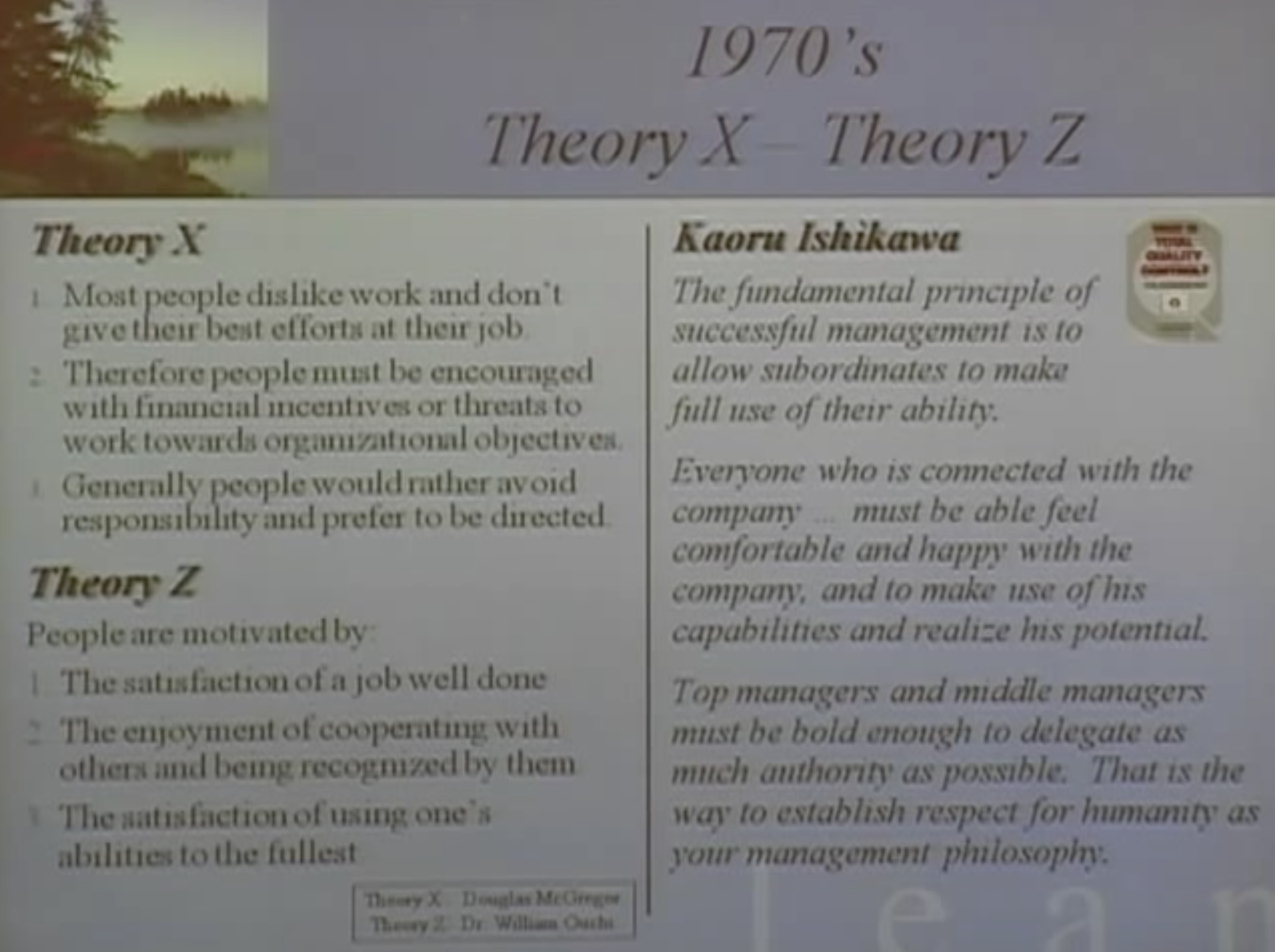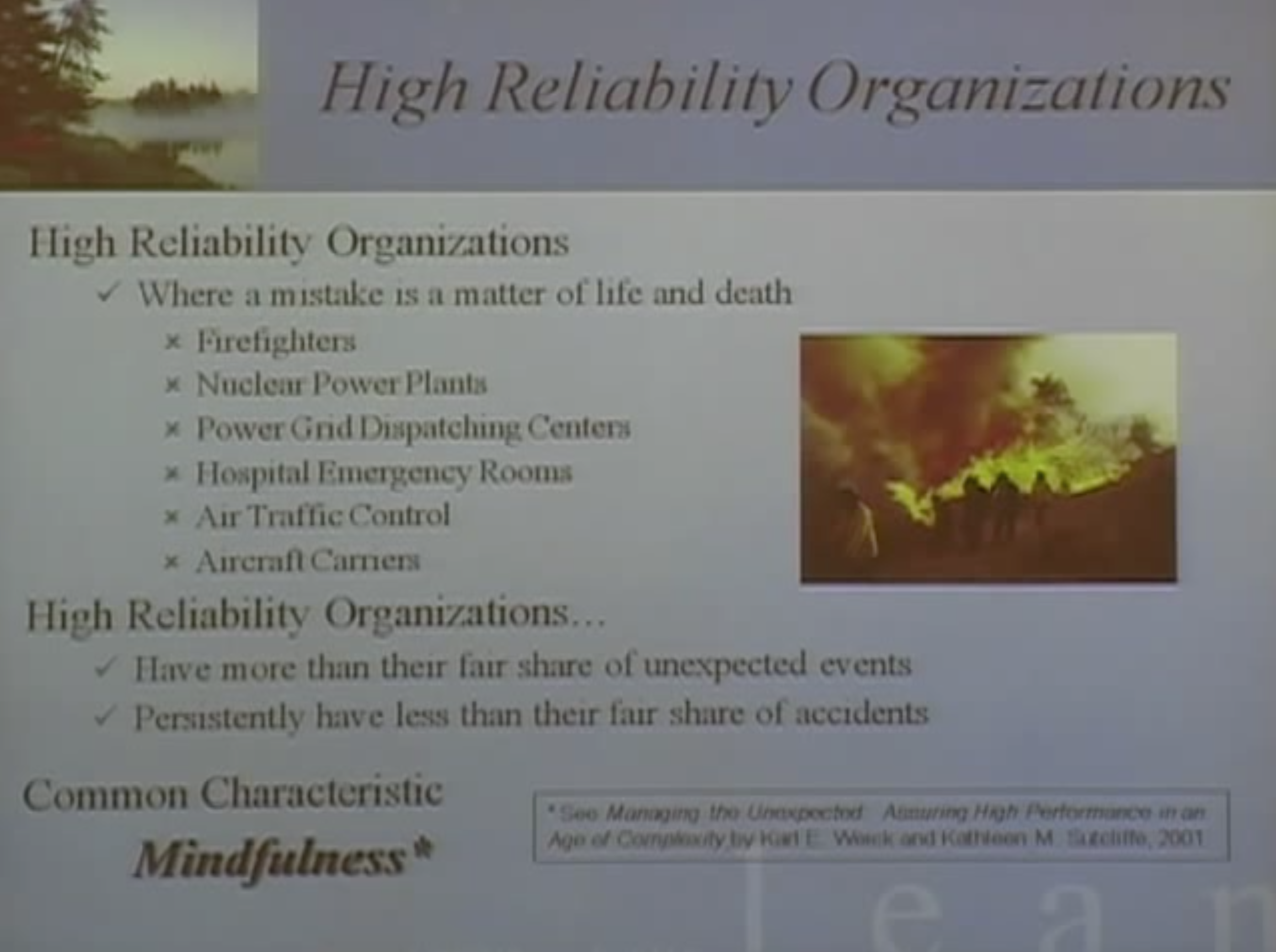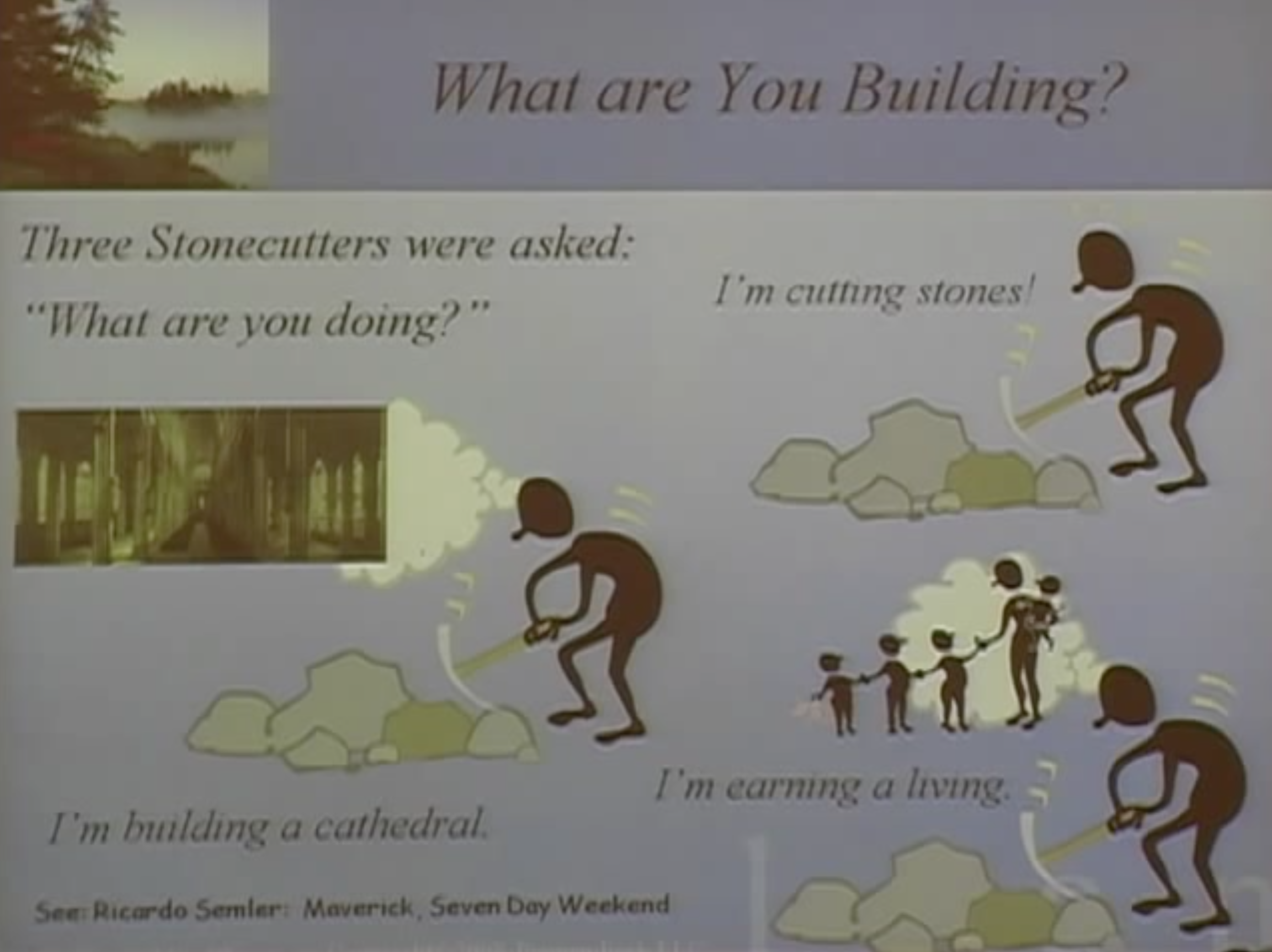- Book: The Leader’s Handbook - Peter Scholtes
- Book: The Principles of Scientific Management - Frederick Taylor
- Book: The Instructor, The Man, And The Job - Charles Allen
- Book: German Army Field Manual 1933/1934
- Topic: Training within Industry (TWI) Statistical Process Control (SPC) - Deming
- Book: Toyota Production System - Taiichi Ohno
- Book: Workplace Management - Taiichi Ohno
- Book: Managing the Unexpected - Karl Weick and Kathleen Sutcliffe
- Book: Misson Command: Command and Control of Army Forces
- Book: Maverick - Ricardo Semler
- Book: The Seven-Day Weekend - Ricardo Semler
before this, no big companies
transport became available
incident: train wreck
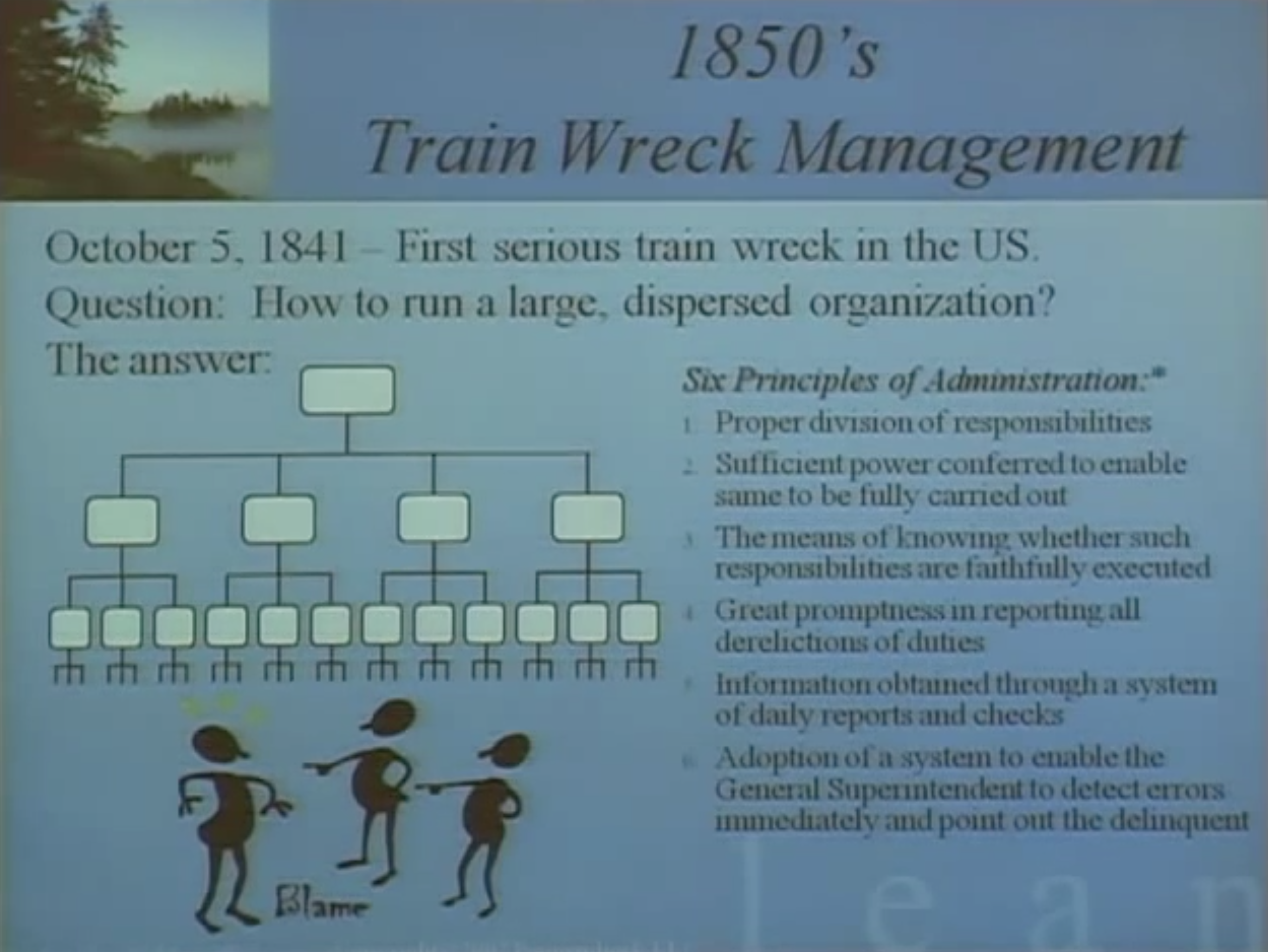 hierarchy & assigning blame
hierarchy & assigning blame
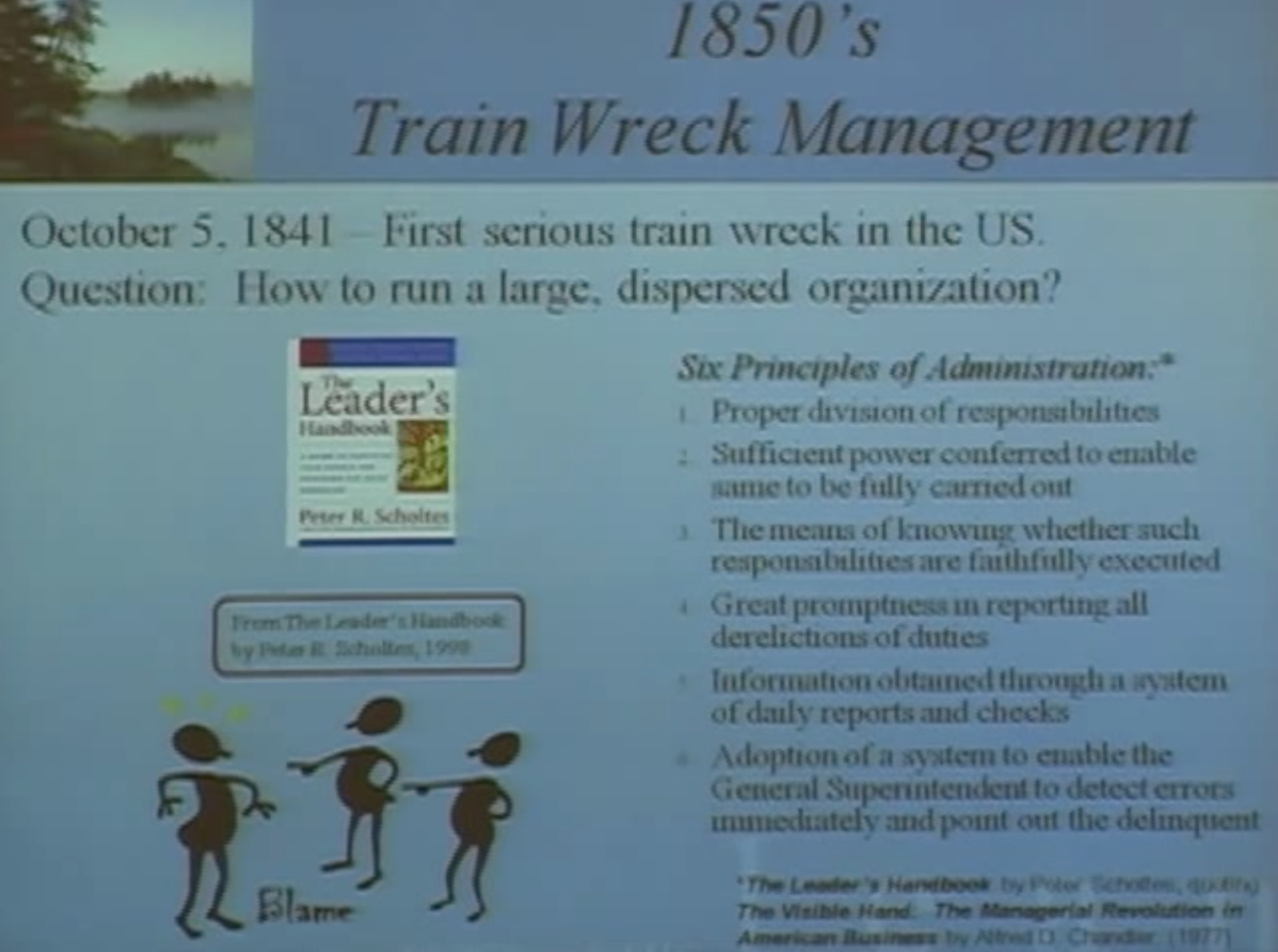
- The Leader’s Handbook - Peter Scholtes (1998) if you wanna read more interesting things about leadership
Army, guns came available
General could no longer stand on a hill and direct a battle
Distrances
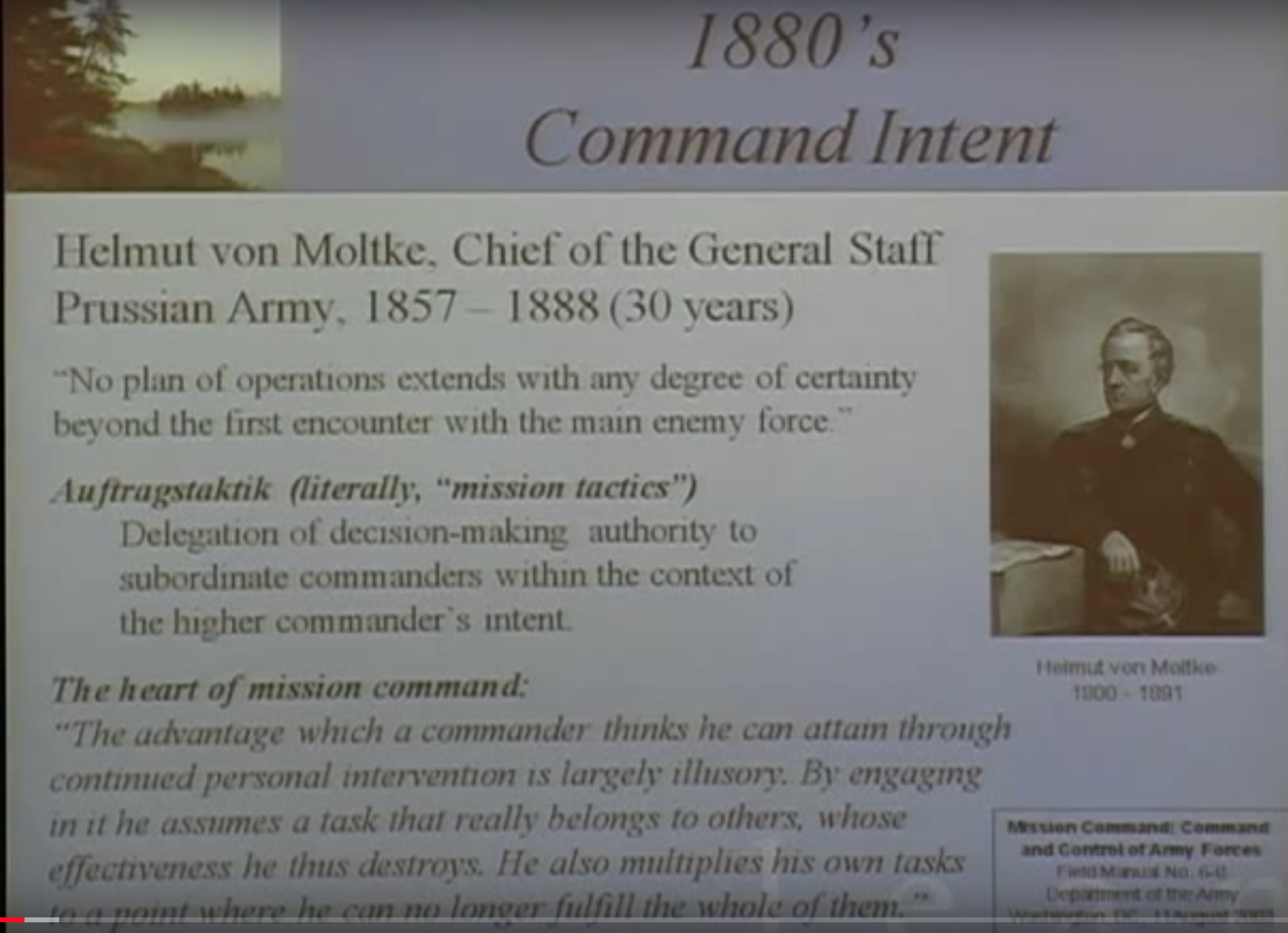
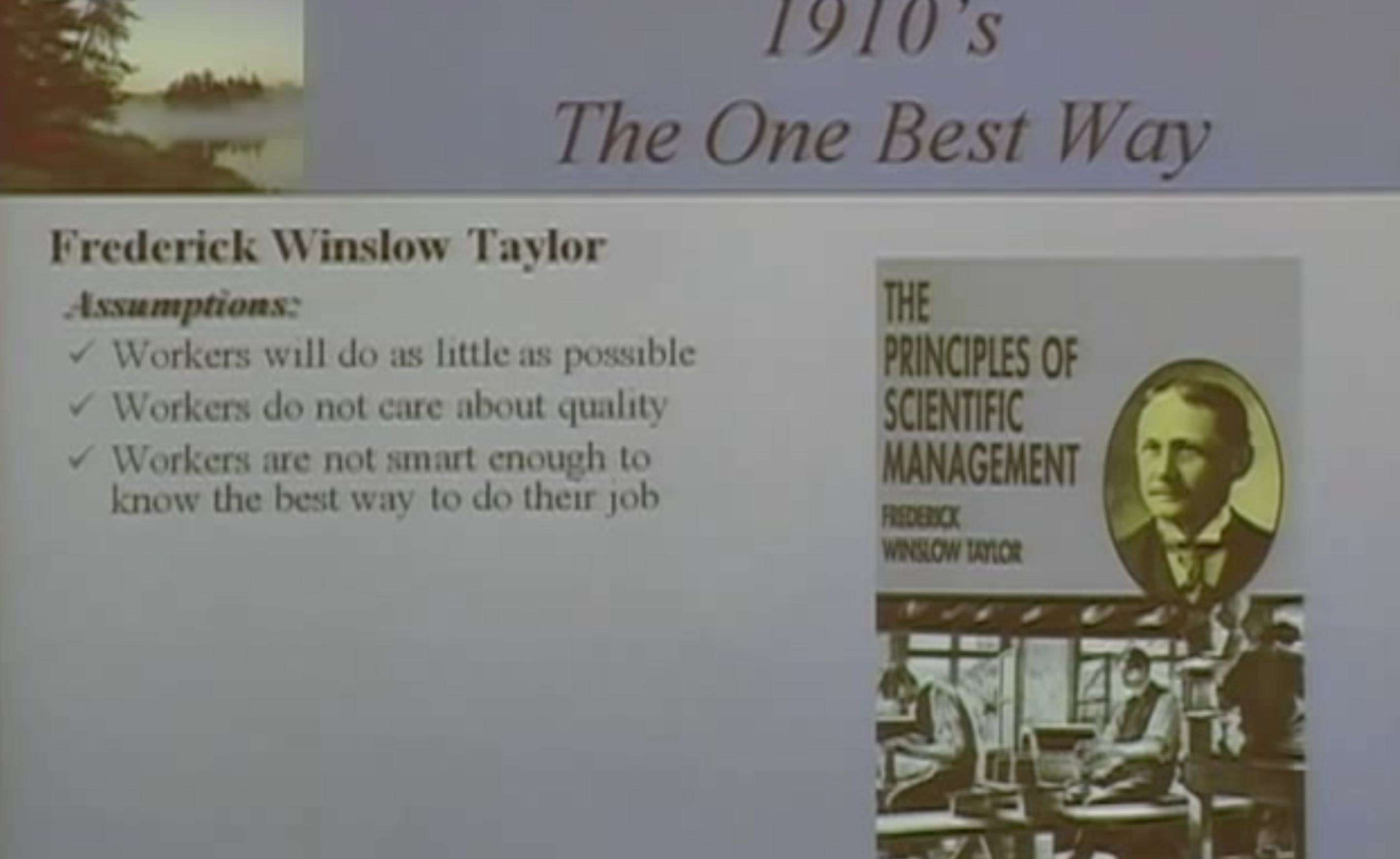 “ppl are stupid and lazy”
“ppl are stupid and lazy”
- Book: The Principles of Scientific Management - Frederick Taylor
Model: train the trainer
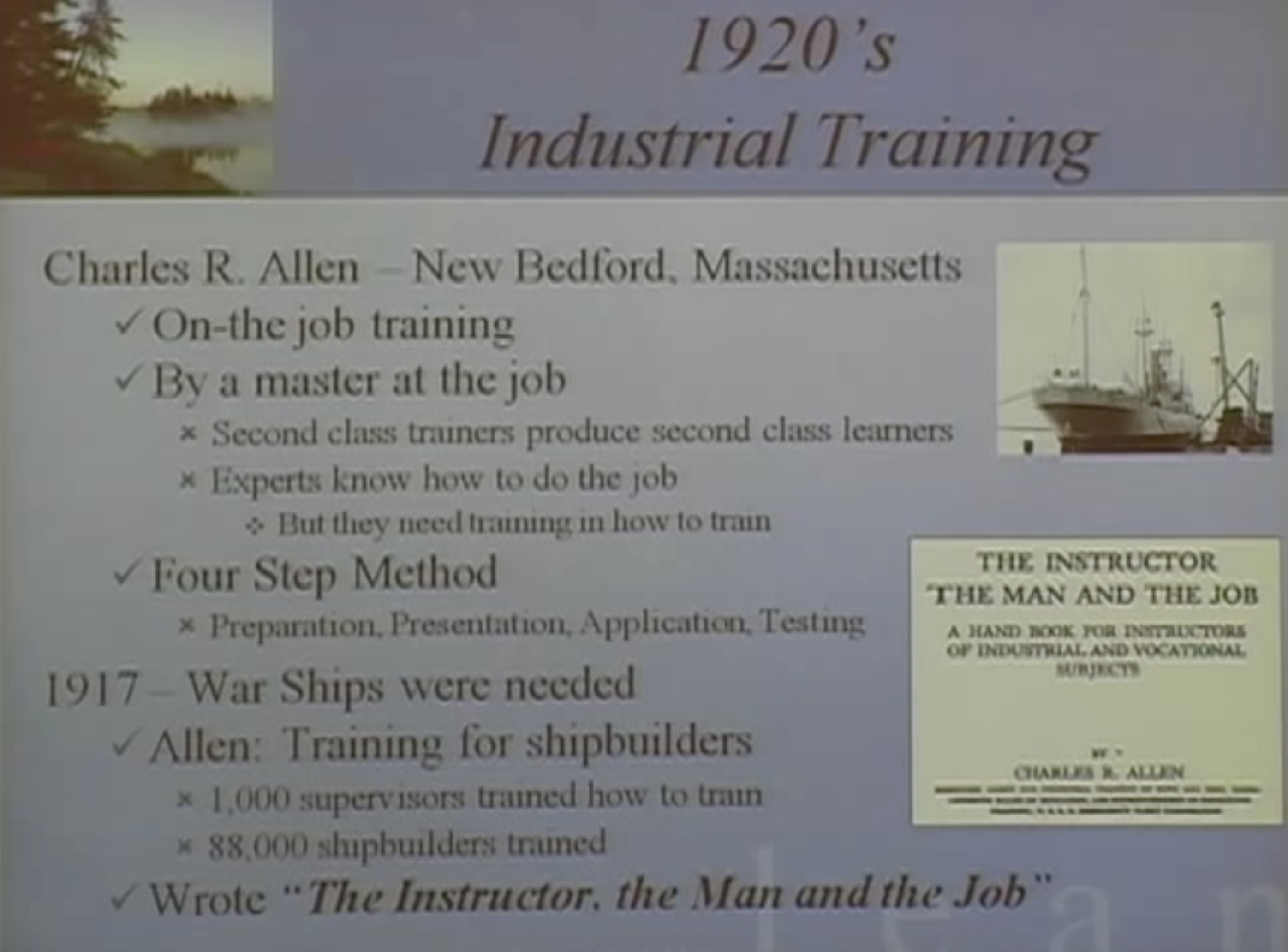 how do we train the masters to train people
how do we train the masters to train people
- Book: The Instructor The Man And The Job - Charles Allen
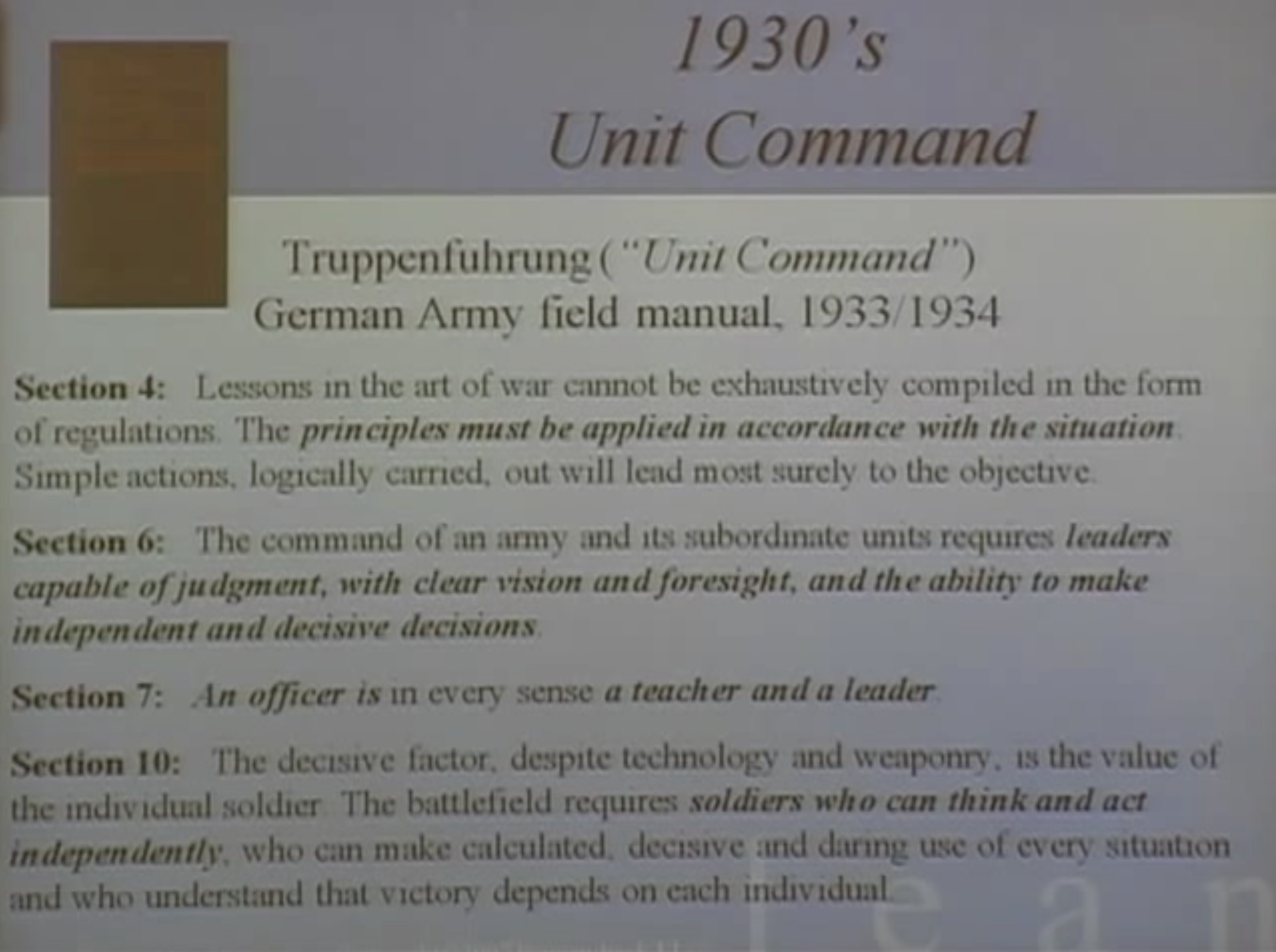 everyone needs to be able to think for themselves
everyone needs to be able to think for themselves
- Book: German Army Field Manual 1933/1934
Training within Industry (TWI)
aka on the job training
Statistical Process Control (SPC)
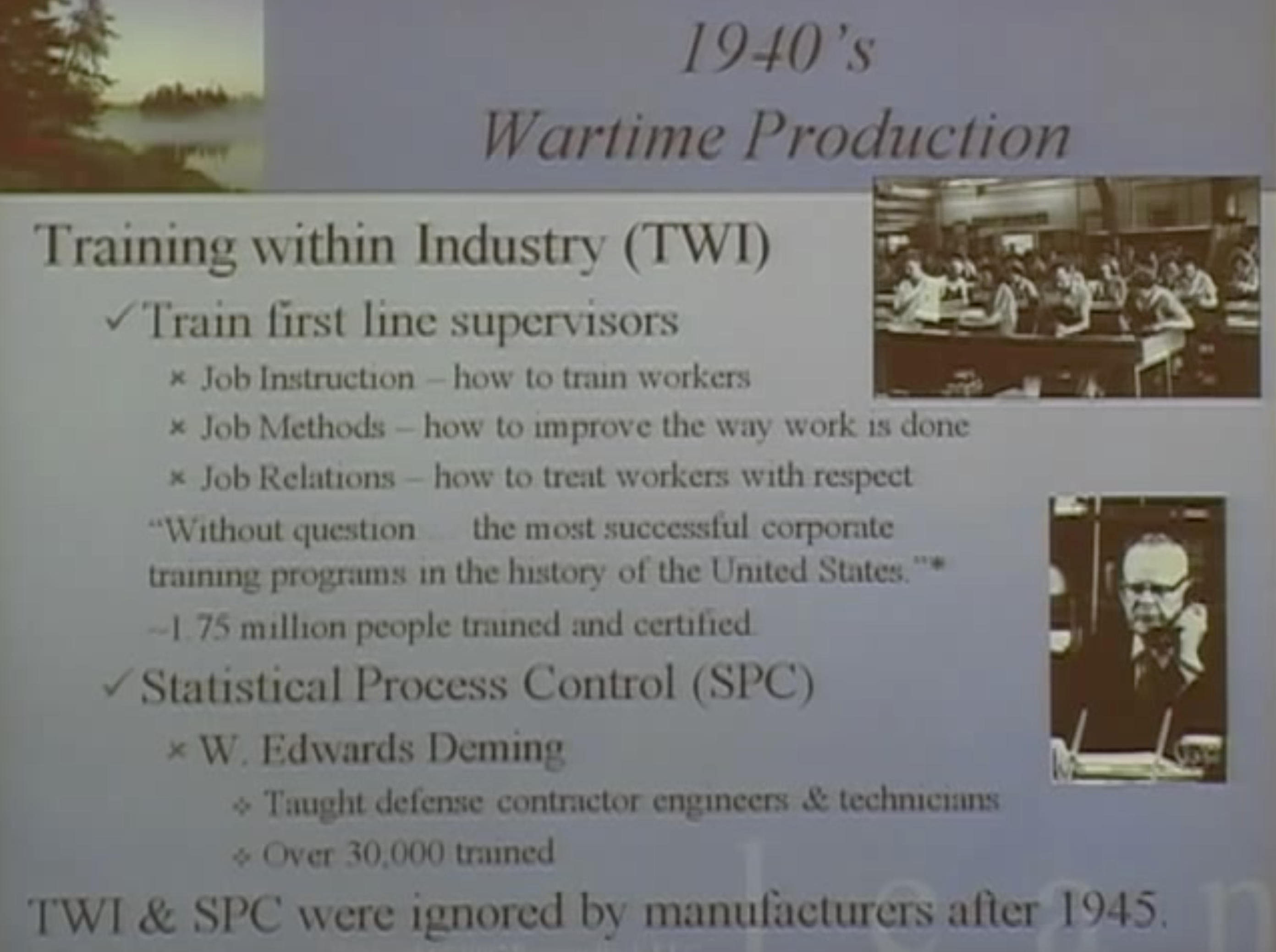 first line supervisors - how to train & how to improve
Deming
first line supervisors - how to train & how to improve
Deming
-> (Germany and) especially Japan
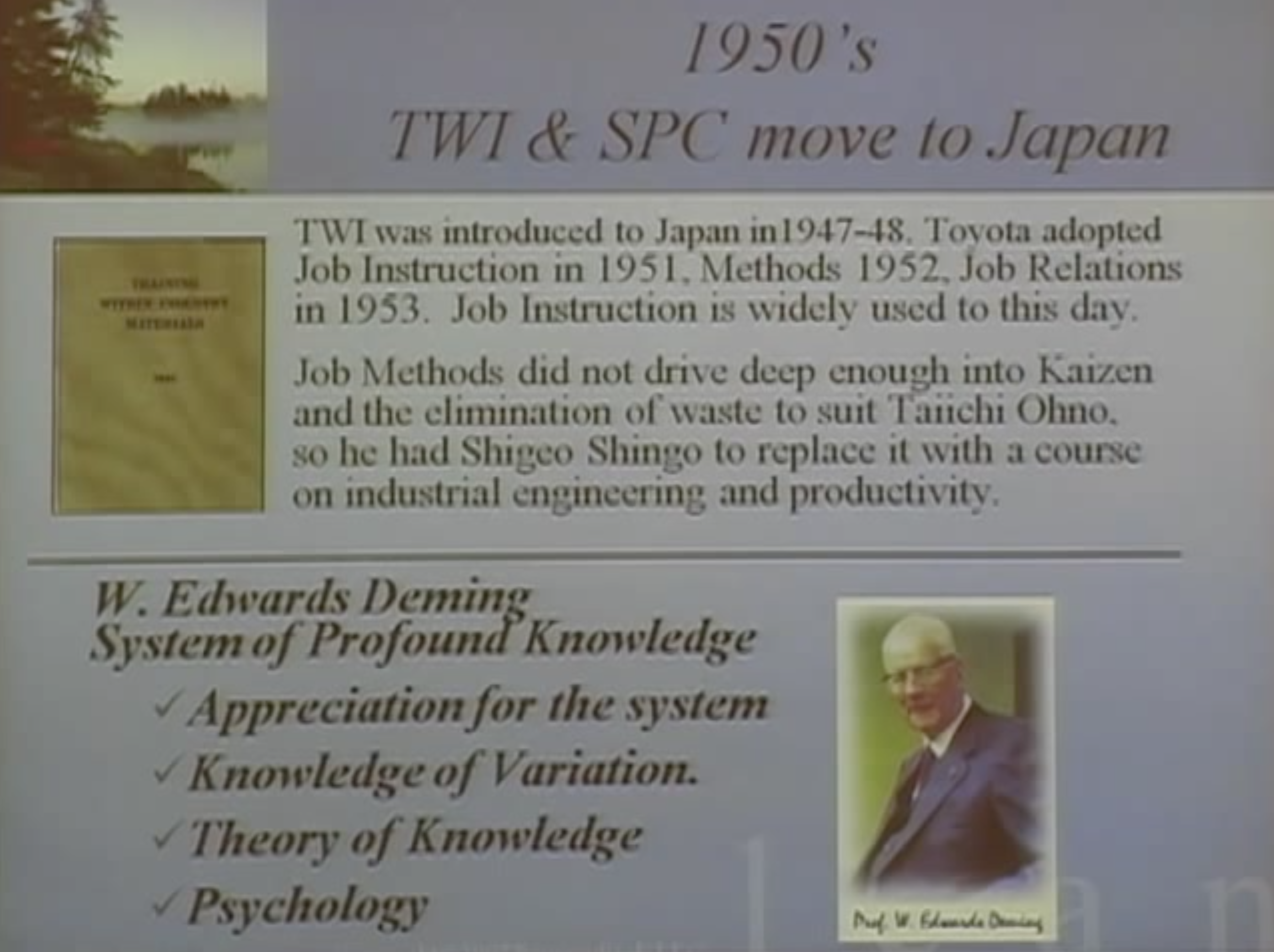 TWI -> very well received, especially ‘Job Instruction’
“if the learner has not learned, the teacher has not taught”
TWI -> very well received, especially ‘Job Instruction’
“if the learner has not learned, the teacher has not taught”
Deming - not just process, but entire System
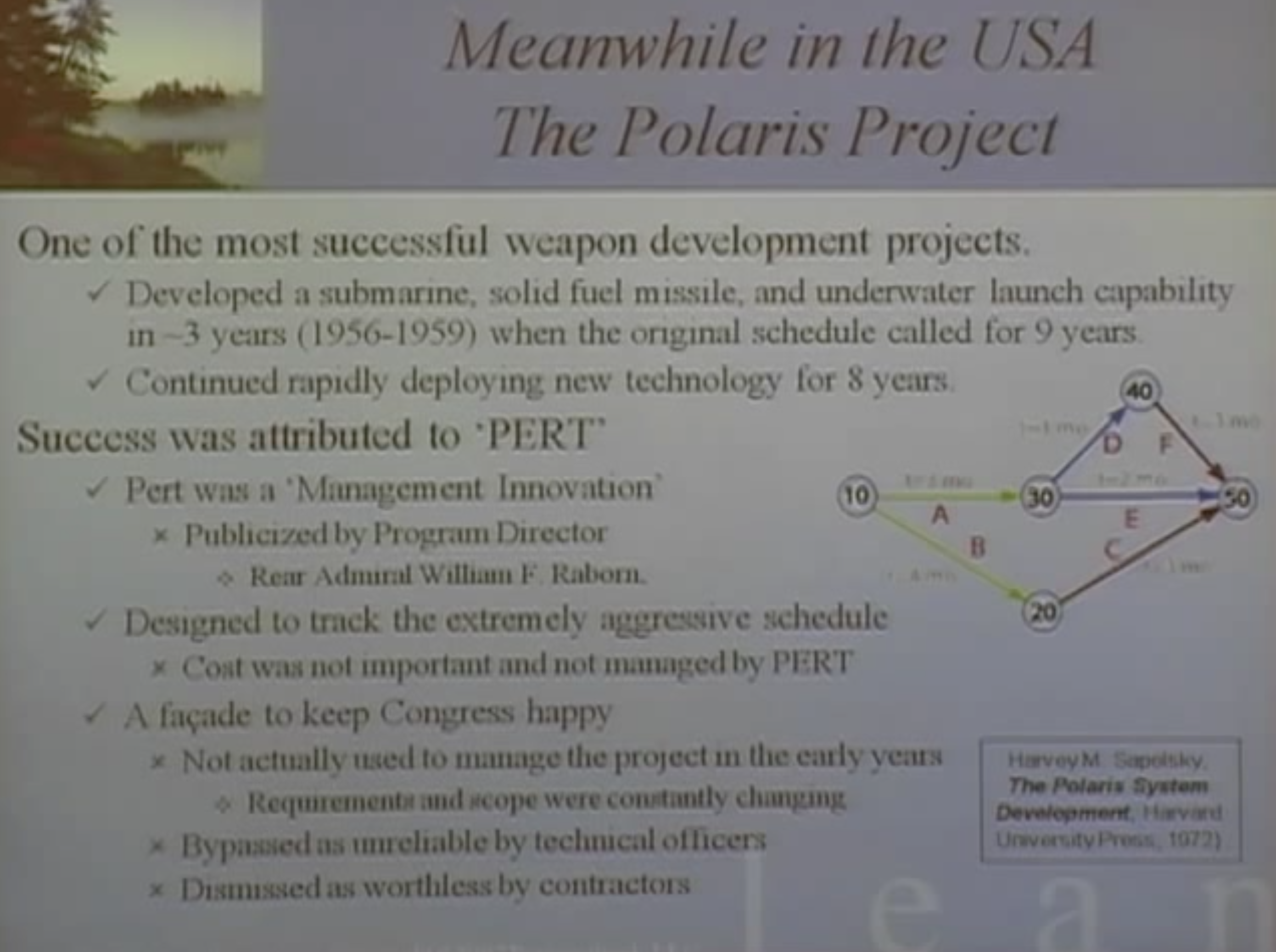 PERT -> “facade to keep the congress away”
PERT -> “facade to keep the congress away”
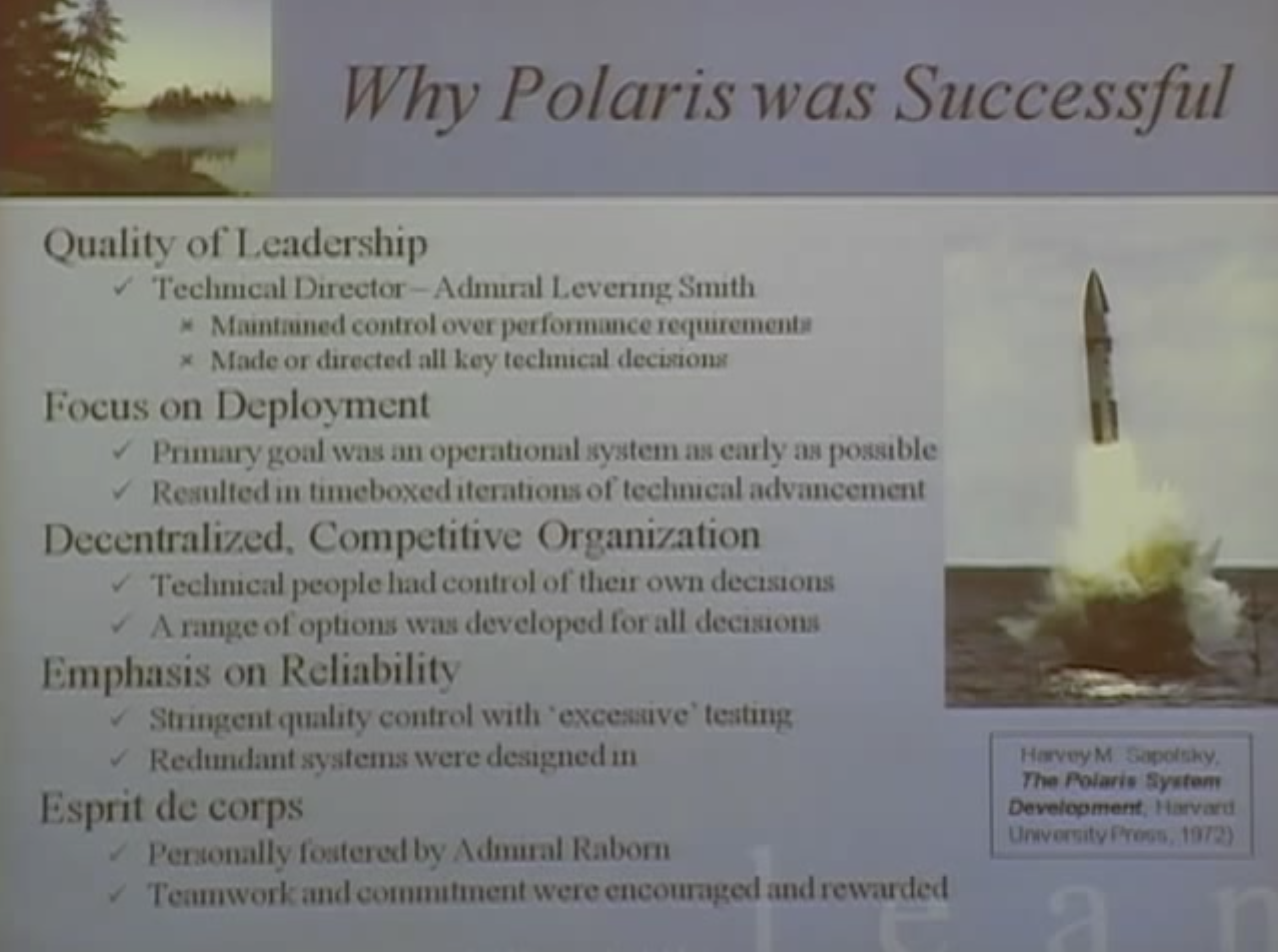
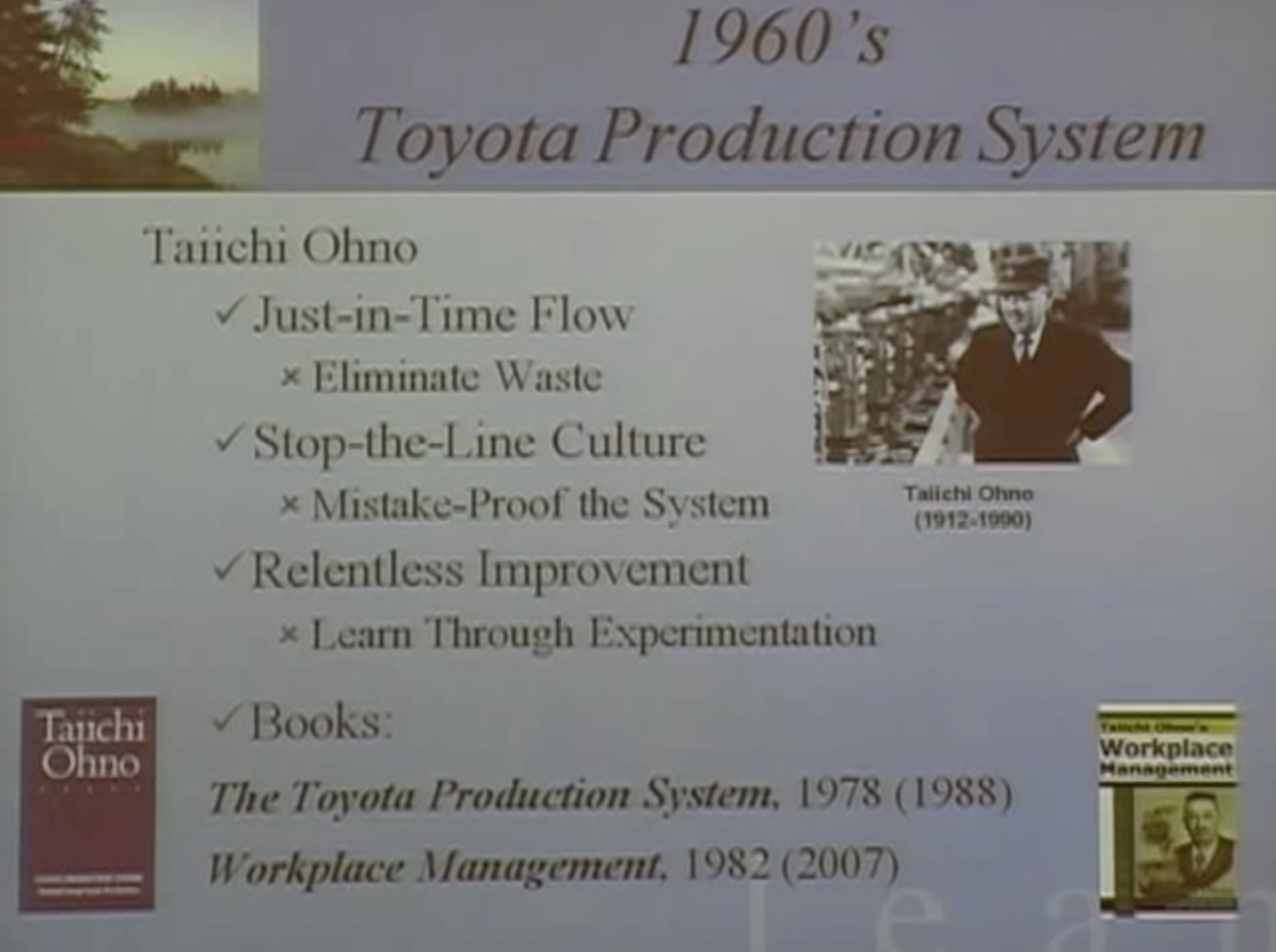
- Book: The Toyota Production System - Tajichi Ohno
- Book: Workplace Management - Tajichi Ohno
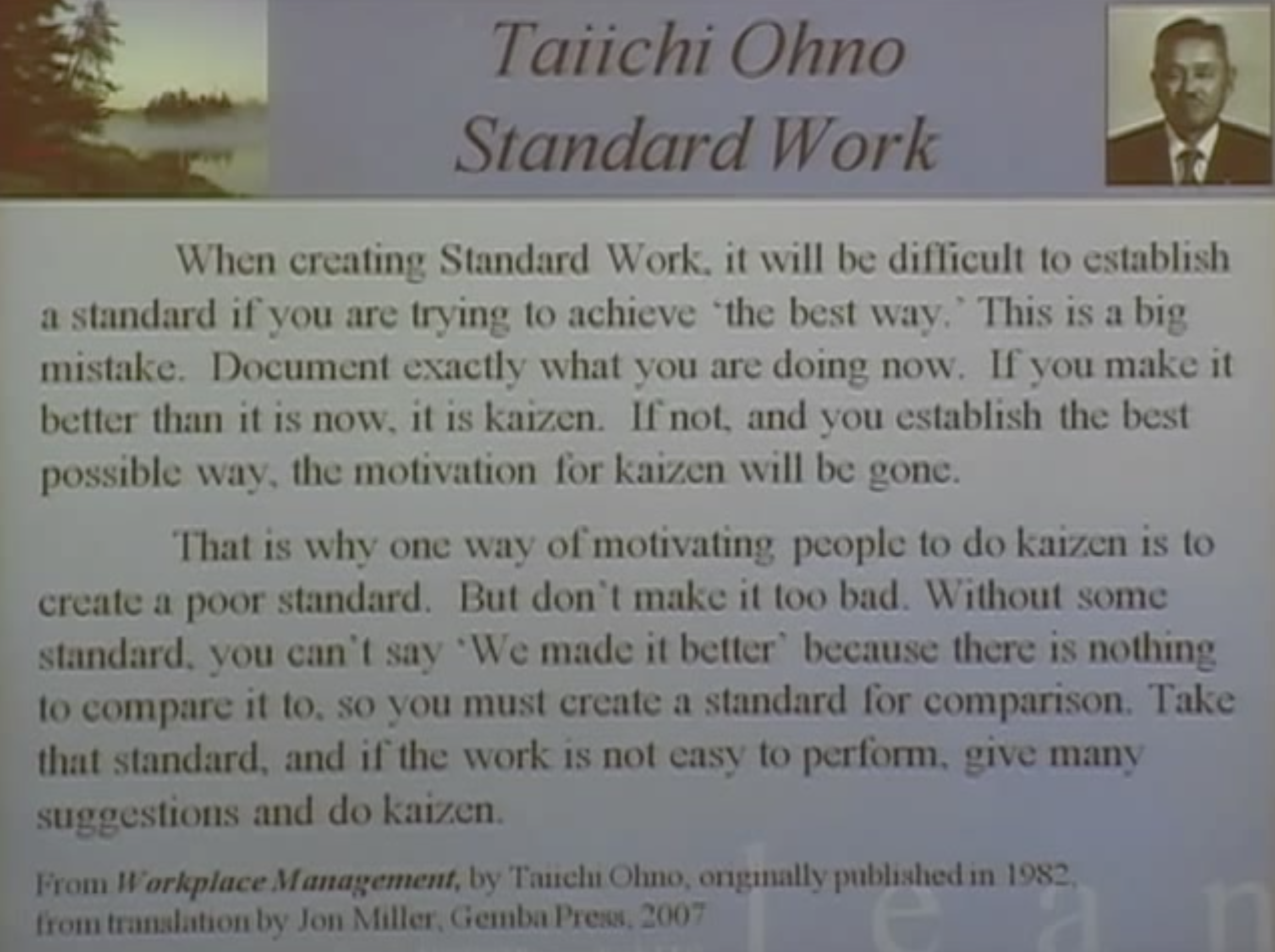 “if your standard is too good, nobody will want to kaizen”
“if your standard is too good, nobody will want to kaizen”
- Book: What is Total Quality Control - Kaoru Ishikawa
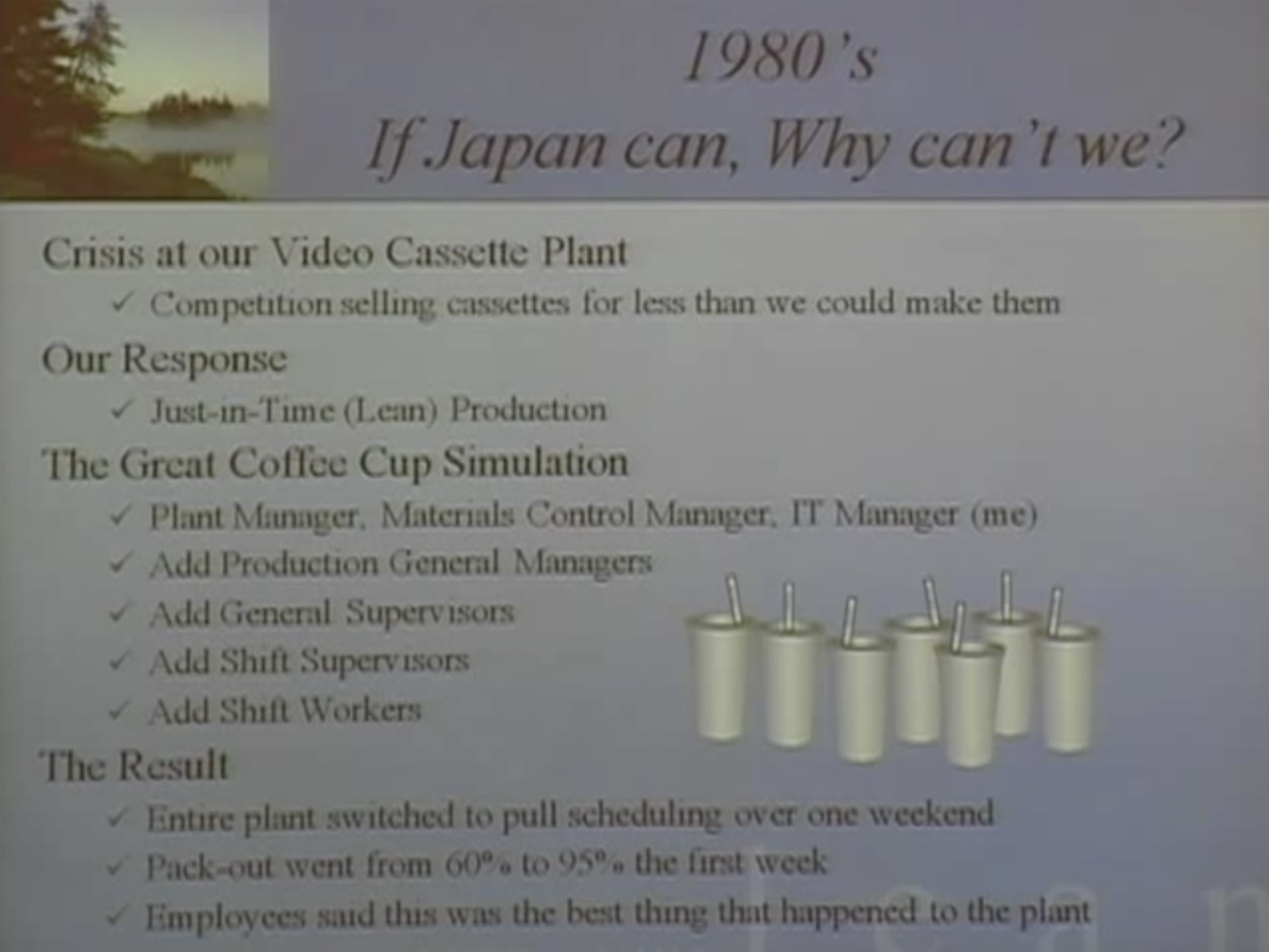 the entire company was involved
details were figured out by the ppl on the floor
the entire company was involved
details were figured out by the ppl on the floor
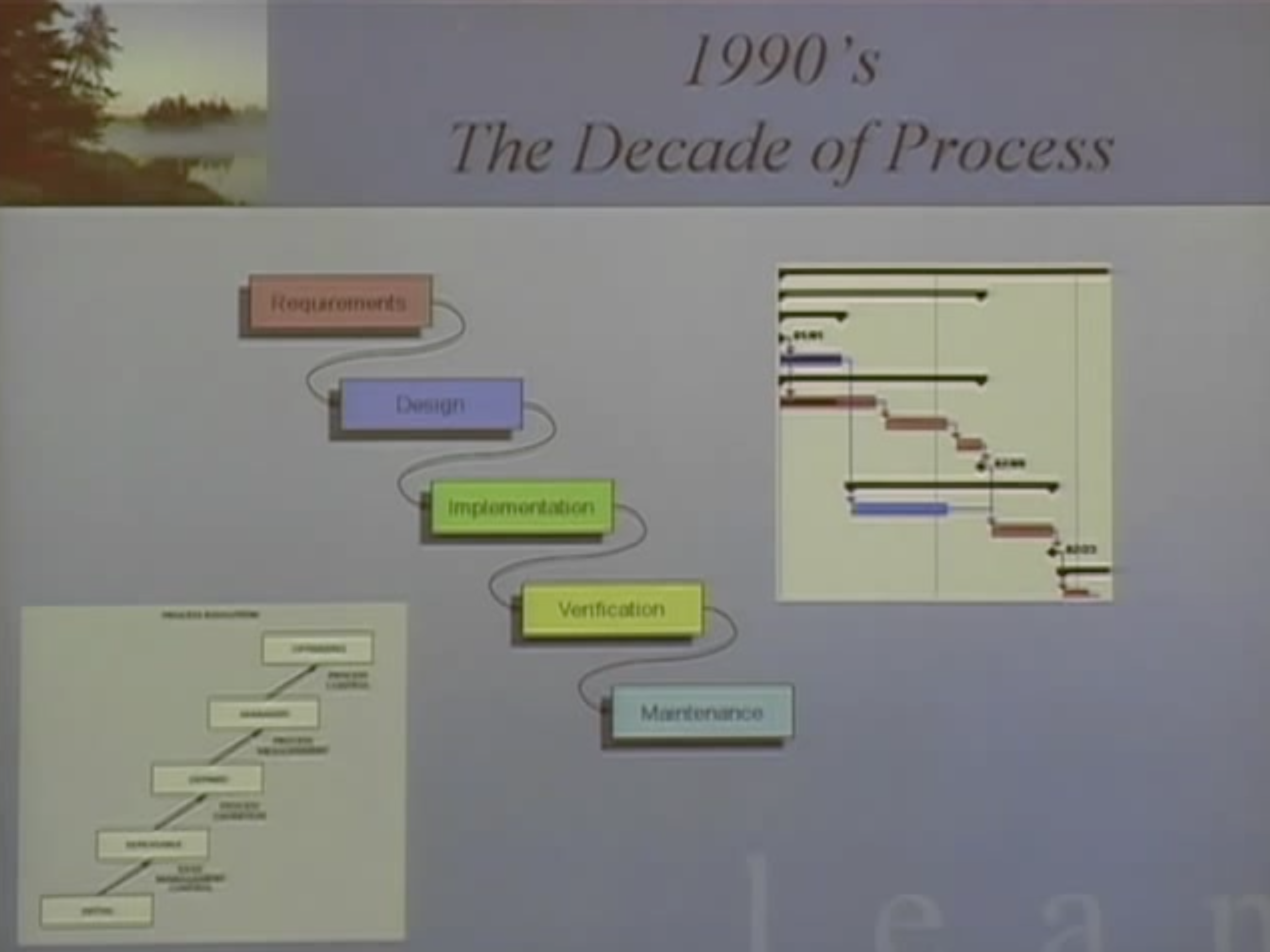
Anecdote
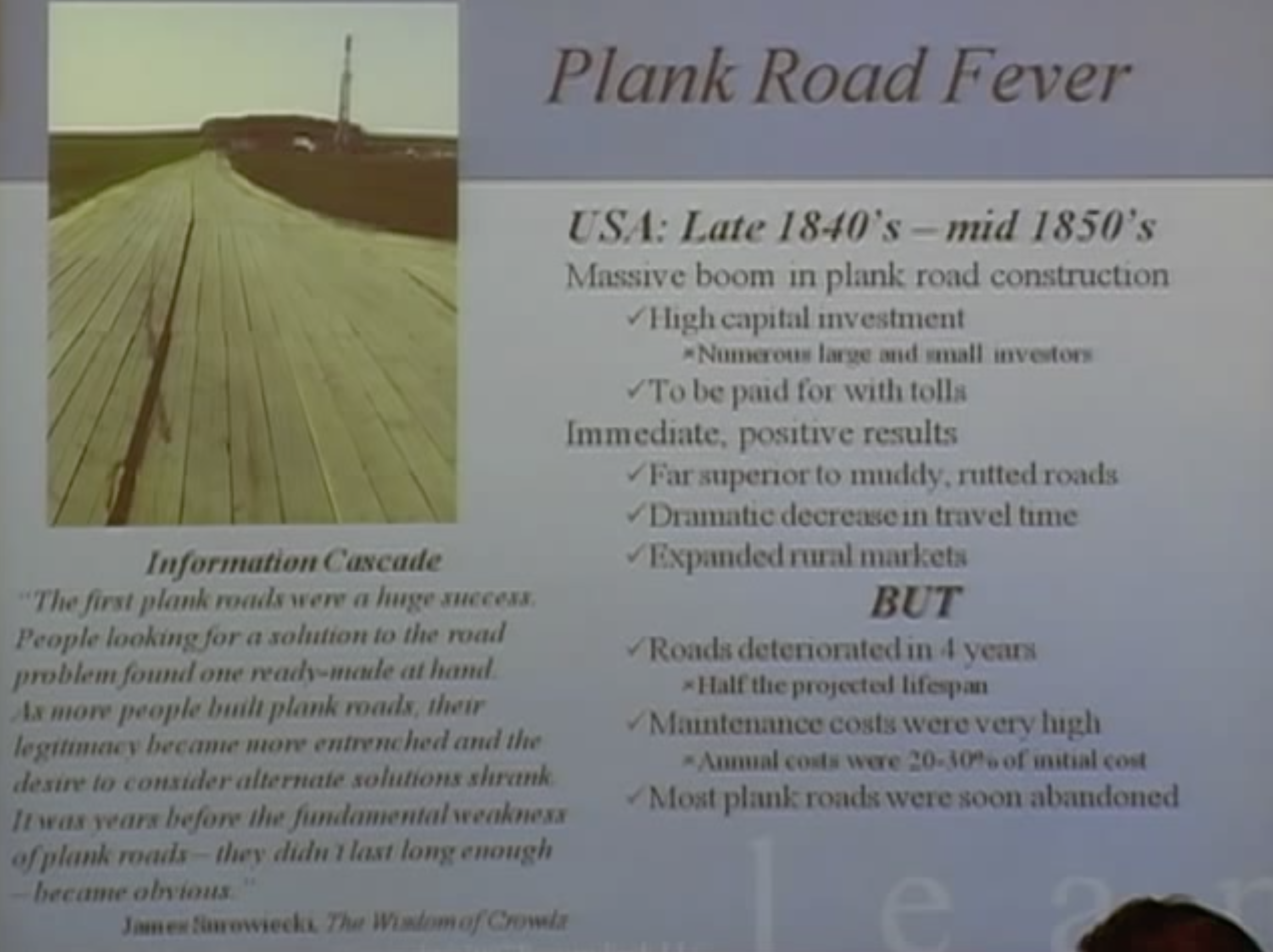
- Book: Managing the Unexpected: Assuring High Performance in an Age of Complexity - Weick and Sutcliffe
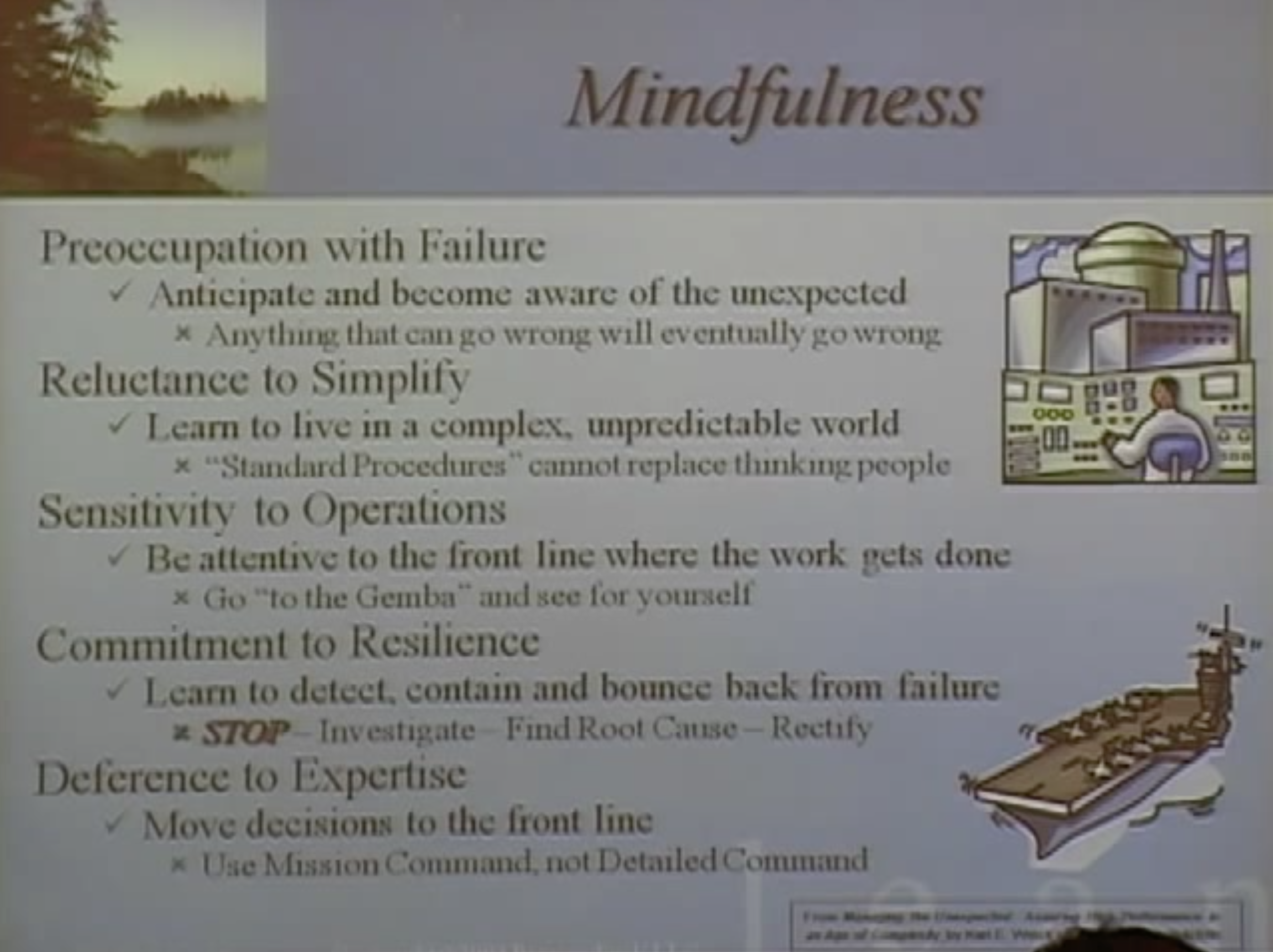
Model: Mission Command vs Detailed Command
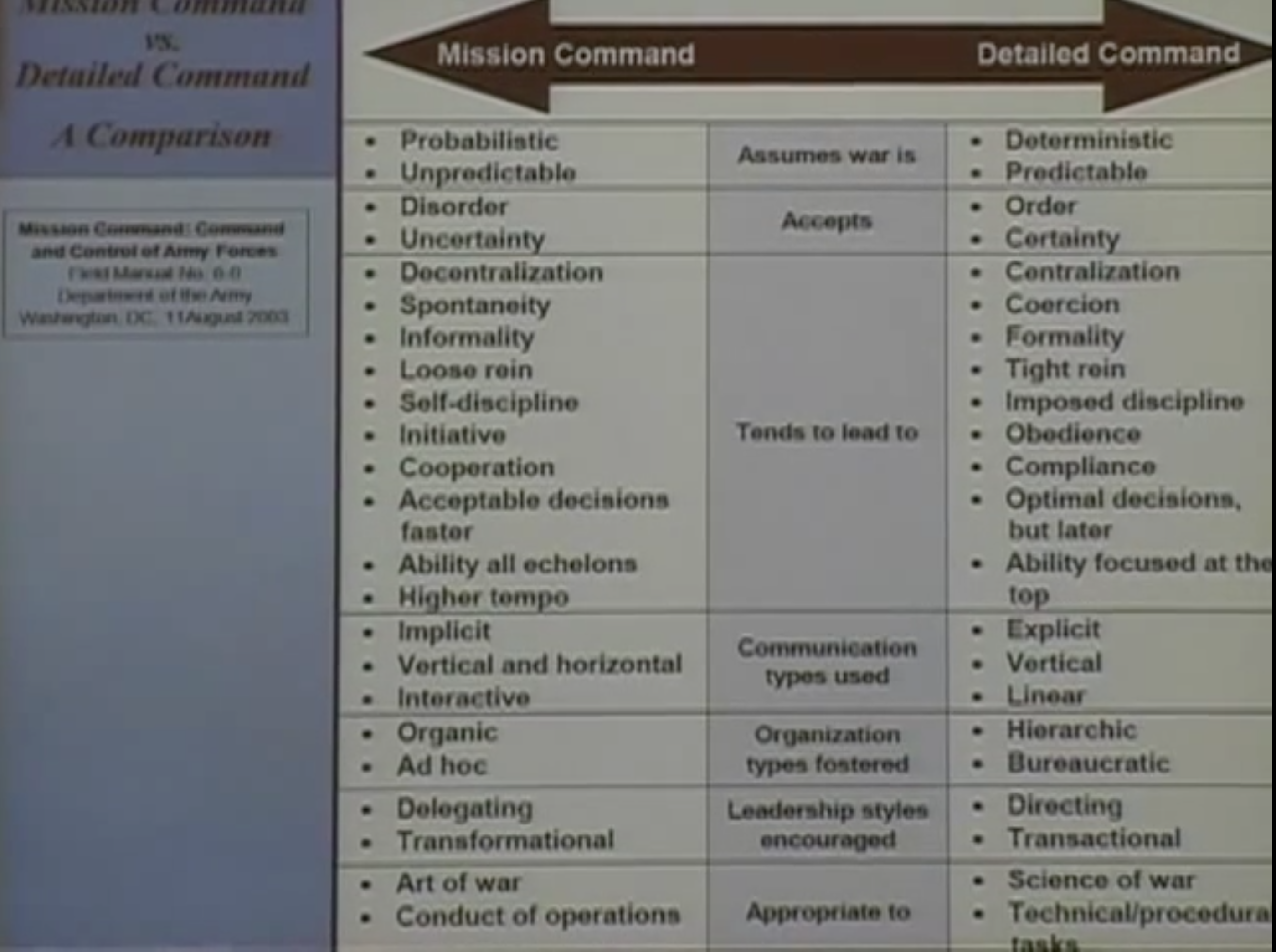
- Book: Misson Command: Command and Control of Army Forces
Model: Product vs Technical leadership
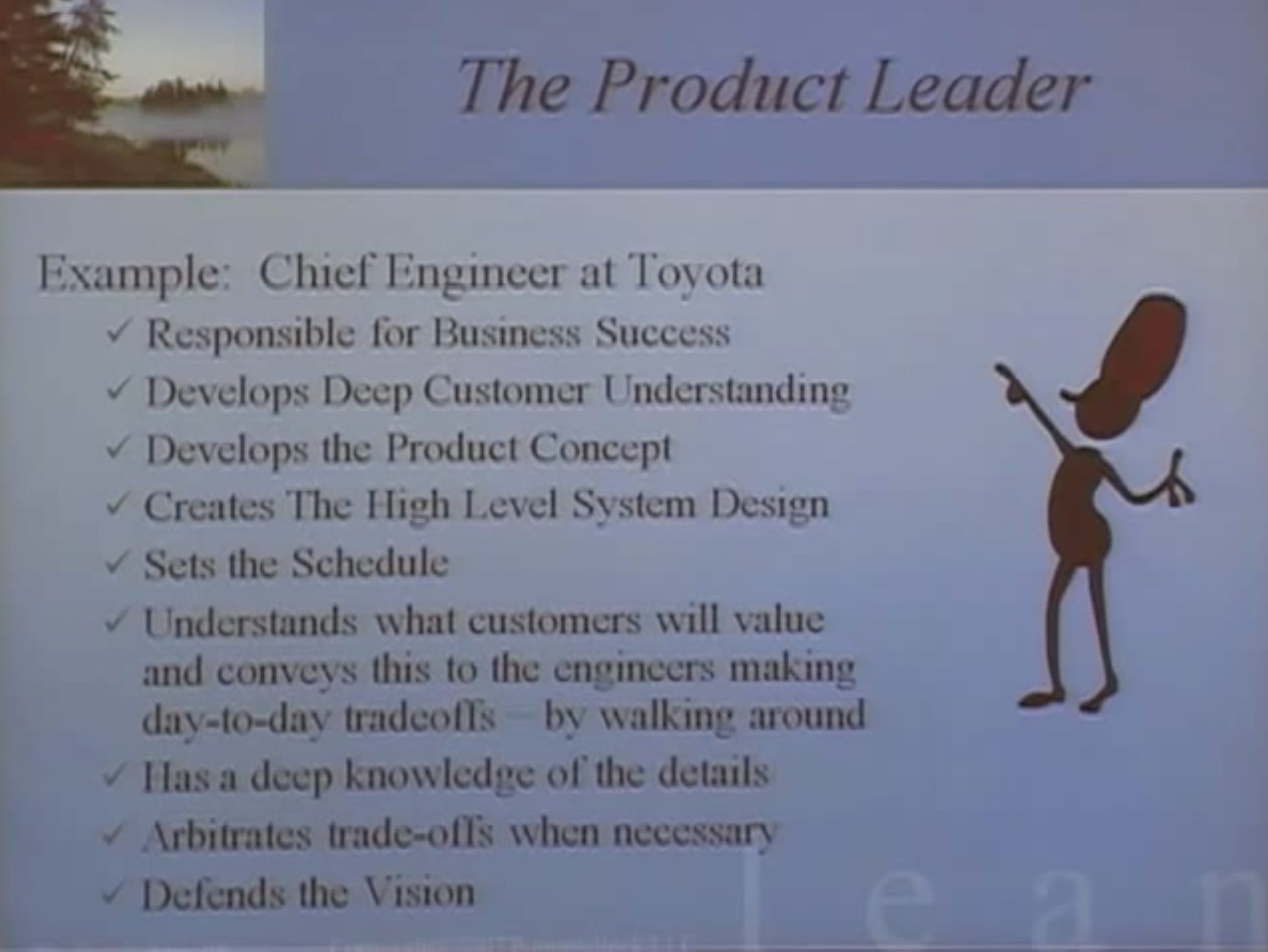 aka Product Champion
develops the high level system design -> 95% of the time a highly skilled tech person
available technology + market need
aka Product Champion
develops the high level system design -> 95% of the time a highly skilled tech person
available technology + market need
Model: Product VS Technical experise
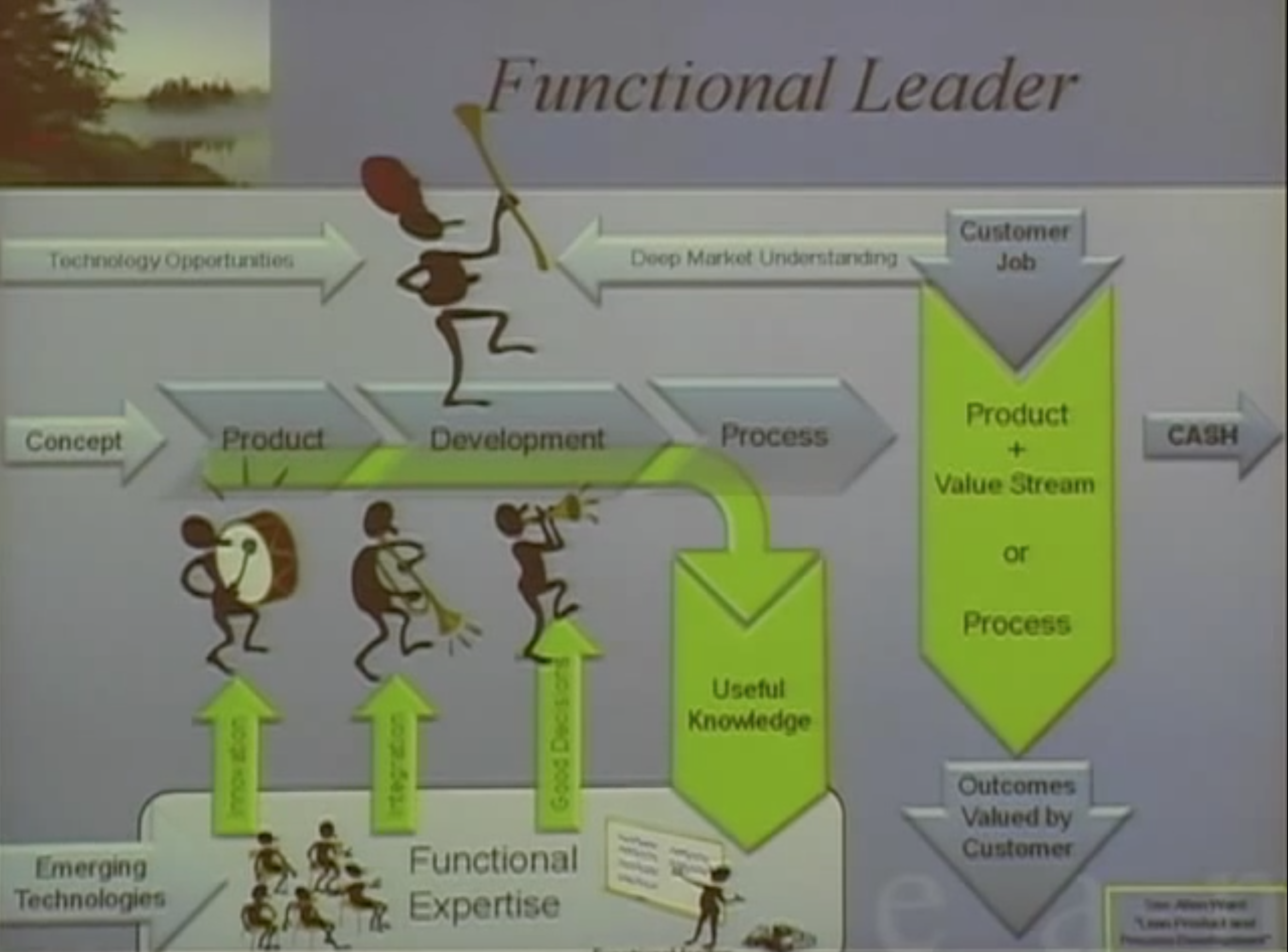
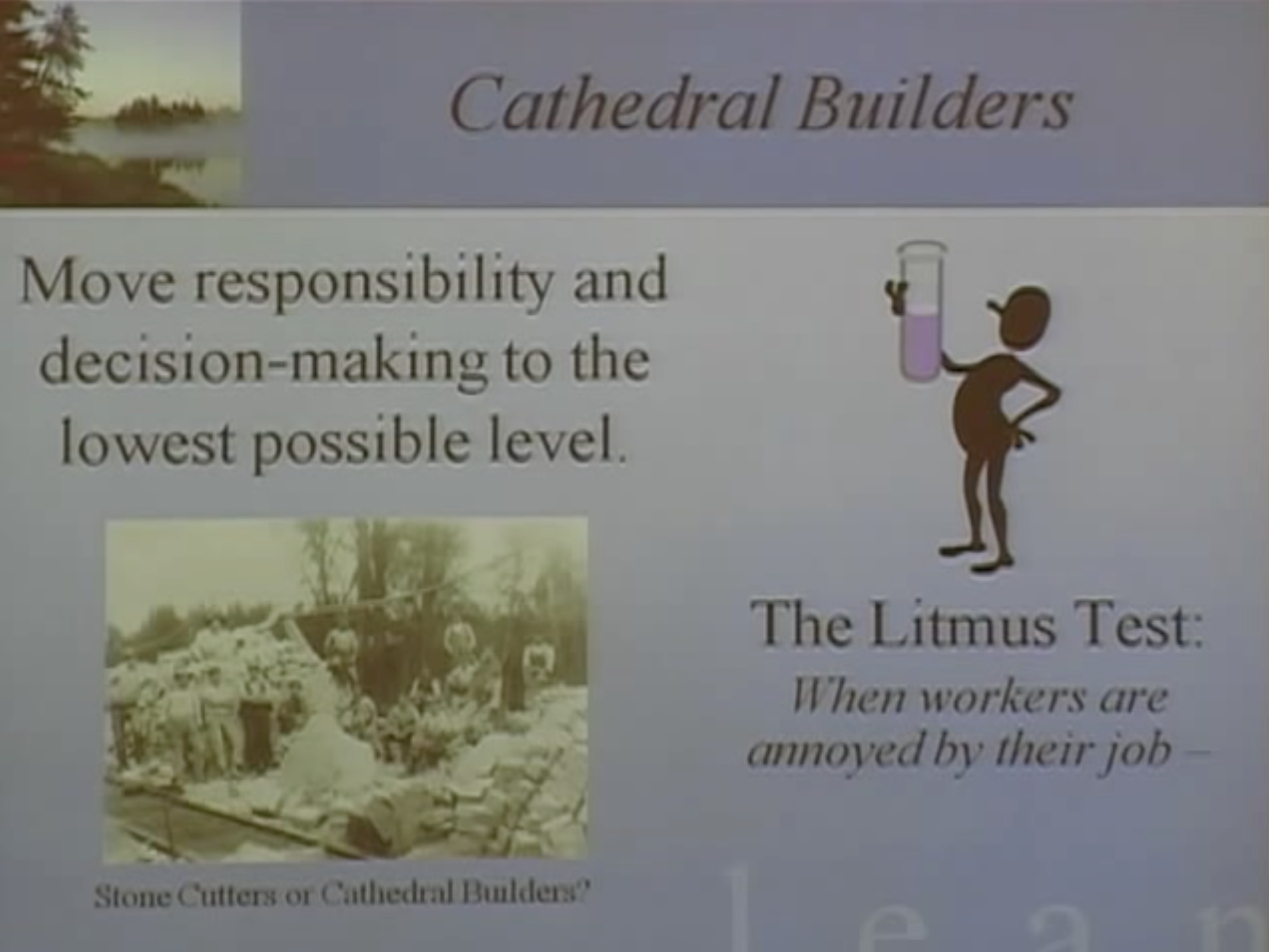
Quote: Annoyed workers When workers are annoyed by their job: """ This concept that relentless improvement means the structures are in place the management is in place encouragement is in place the leadership is in place so that when people are annoyed by something in their job, their boss’s job is to help them fix it, not live with it, not ‘well, sorry that’s regulations’ but ‘okay, how about we figure out what the real problem is, maybe that’s not the problem let’s get at the root cause’ ‘how about you come up with an idea about what might make it better’ ‘Maybe we could do some experiments to figure out whether or not that really makes it better’ that’s the job of a manager in an organisation that has Cathedral builders, and really can do constant improvement all the time for decades on end """
The role of leadership in software development https://www.youtube.com/watch?v=ypEMdjslEOI GoogleTechTalks 88,216 views views Published on Jun 19, 2008

Description
Google Tech Talks May 6, 2008 ABSTRACT When you look around, there are a lot of leaders recommended for software development. We have the functional manager and the project manager, the scrum master and the black belt, the product owner and the customer-on-site, the technical leader and the architect, the product manager and the chief engineer. Clearly that’s too many leaders. So how many leaders should there be, what should they do, what shouldn’t they do, and what skills do they need? This will be a presentation and discussion of leadership roles in software development – what works, what doesn’t and why. Speaker: Mary Poppendieck Mary Poppendieck started her career as a process control programmer, moved on to manage the IT department of a manufacturing plant, and then ended up in product development, where she was both a product champion and department manager. Mary considered retirement 1998, but instead found herself managing a government software project where she first encountered the word “waterfall.” When Mary compared her experience in successful software and product development to the prevailing opinions about how to manage software projects, she decided the time had come for a new paradigm. She wrote the award-winning book Lean Software Development: An Agile Toolkit in 2003 to explain how the lean principles from manufacturing offer a better approach to software development. Over the past six years, Mary has found retirement elusive as she lectures and teaches classes with her husband Tom. Based on their on-going learning, they wrote a second book, Implementing Lean Software Development: From Concept to Cash in 2006. A popular writer and speaker, Mary continues to bring fresh perspectives to the world of software development. Speaker: Tom Poppendieck Tom Poppendieck has 25 years of experience in computing including eight years of work with object technology. His modeling and mentoring skills are rooted in his experience as a physics professor. His early work was in IT infrastructure, product development, and manufacturing support, and evolved to consulting project assignments in healthcare, logistics, mortgage banking, and travel services. Tom led the development of a world-class product data management practice for a major commercial avionics manufacturer that reduced design to production transition efforts from 6 months to 6 weeks. He also led the technical architecture team for very large national and international Baan and SAP implementations. Tom Poppendieck is an enterprise analyst and architect, and an agile process mentor. He focuses on identifying real business value and enabling product teams to realize that value. Tom specializes in understanding customer processes and in effective collaboration of customer, development and support specialists to maximize development efficiency, system flexibility, and business value. Tom is co-author of the book Lean Software Development: An Agile Toolkit, published in 2003, and its sequel, Implementing Lean Software Development: From Concept to Cash, published in 2006.
